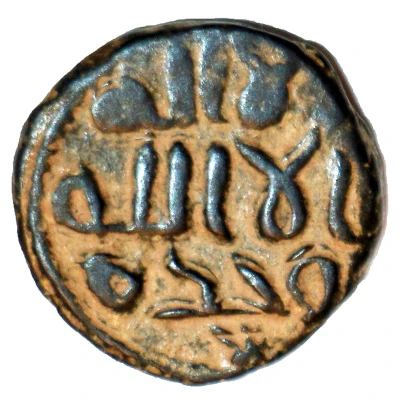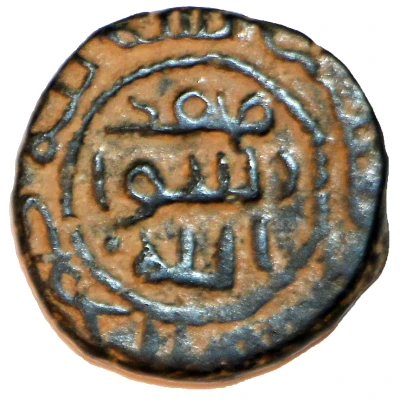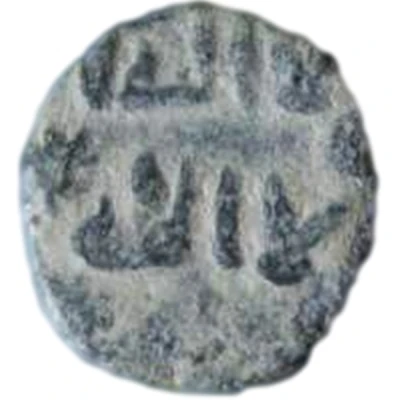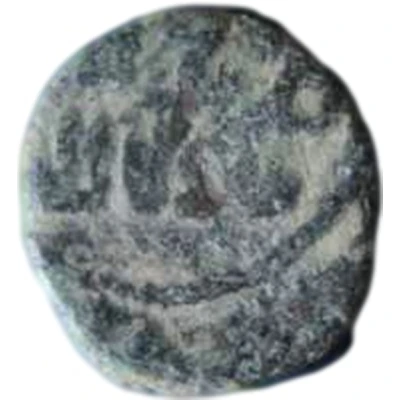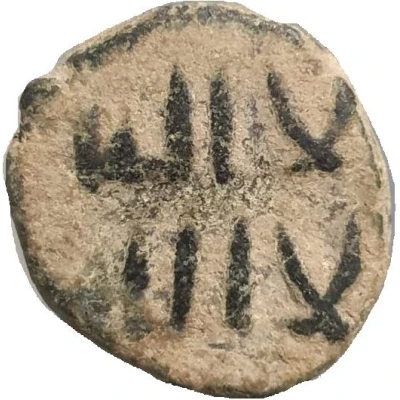
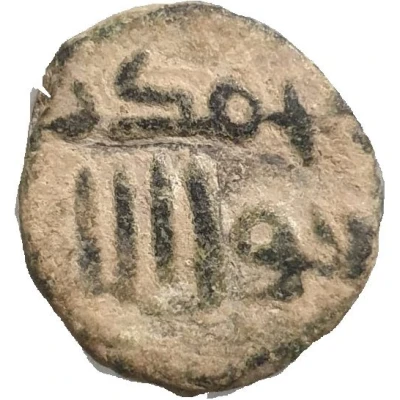

© infierno
Fals - temp. Al-Walid ibn Abd al-Malik - "Al-Walid I" al-Maɣréb ND
| Copper | 5.14 g | 17 mm |
| Issuer | Umayyad Caliphate |
|---|---|
| Type | Standard circulation coin |
| Years | 705-715 |
| Value | 1 Fals (1⁄60) |
| Currency | Dinar (661-750) |
| Composition | Copper |
| Weight | 5.14 g |
| Diameter | 17 mm |
| Shape | Round (irregular) |
| Demonetized | Yes |
| Updated | 2024-10-05 |
| Numista | N#102597 |
|---|---|
| Rarity index | 89% |
Reverse
Script: Arabic
Lettering: محمد رسول ألله
Translation: "Mohammed is the Prophet of Allah"
Comment
The fals (plural fulus) was a medieval copper coin first produced by the Umayyad caliphate (661-750) beginning in the late 7th century. The name is a corruption of follis, a Roman and later Byzantine copper coin. The fals usually featured ornate Arabic script on both sides. Various copper fals were produced until the 19th century. Their weight varied, from one gram to ten grams or more. The term is still used in modern spoken Arabic for money, but pronounced 'fils'.- This coin was probably struck between AD 700-744, in Tangier (Morocco) -
No date and mintmark (North African epigraphy).
Other references:
Frochoso II-a [Los feluses de Al-Andalus, Frochoso Sanchez, R.]
SICA-2 [Sylloge of Islamic Coins in the Ashmolean, Volume 2: Early Post-Reform Coinage, Nicol Norman].
Interesting fact
One interesting fact about this coin is that it was issued during the reign of Al-Walid ibn Abd al-Malik, who was the Umayyad Caliph from 705 to 715 CE. He was known for his military campaigns and his efforts to centralize the administration of the Caliphate. This coin, which was made of copper and weighed 5.14 grams, was likely used for everyday transactions and circulated widely throughout the Umayyad Empire.
